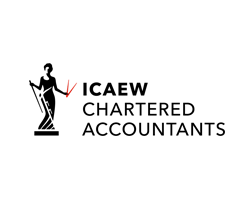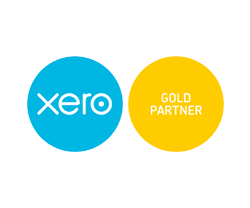How do I qualify for research and development tax credits?
+HMRC’s definition of research and development (R&D) is a little narrower than the ordinary meaning. You will qualify for R&D tax credits if:
- You trade as a limited company
- You have undertaken a clearly definable project linked to your company’s trade; and
- The project seeks to achieve an advance in overall scientific or technological knowledge
It is not sufficient to have a commercially innovative product or process: an advance in knowledge must be sought.
How do I define an R&D project?
+Try not to think of projects in terms of the product or service you are developing and more by the problem or class of problems you are having difficulty overcoming. This could mean multiple R&D projects are undertaken in the process of bringing a single product or service to market.
When does an R&D project start and end?
+The project starts at the planning stage when the scientific or technological uncertainties are identified and your plan for overcoming them is put in place.
The project ends when those uncertainties have been resolved, usually when you have a working prototype. Activity undertaken after this point, for example to improve aesthetics or usability, is normally considered to be product development and would not form part of the project.
A project also ends if it is abandoned. R&D tax credits can still be claimed on abandoned projects because there is no stipulation that new knowledge must be obtained; only that it be sought.
A project can re-start if work is required to make the product more efficient or commercially viable. These processes usually present different problems so would potentially form the basis of a new project.
What is an advance in overall knowledge?
+In short, the resolution of generally accepted scientific or technological uncertainties. Before you start your project, would somebody working in that field of science or technology already know, or easily be able to work out, how to overcome the uncertainties?
For example, consider Neils, an amateur physicist, who is completely unaware of Einstein’s theory of general relativity, even though the theory has been long since published. Neils goes on to develop a theory of gravity yielding the same field equation as Einstein. Since this knowledge is already in the public domain, no advance has been made even though Neils’ achievement is very impressive.
Now meet Karl, a German physicist. Karl provides a solution to Einstein’s field equation that allows him to determine that there is a distance from a black hole at which even light cannot escape its gravitational pull. Karl has used Einstein’s work to advance our knowledge of black holes so his project would qualify for R&D tax credits.
[Of course, these projects would need to be linked to a trade in order to qualify for R&D tax credits. Knowledge for knowledge’s sake would not qualify.]
What is not an advance in overall knowledge?
+HMRC do not consider an advance to have been made in activities such as:
- Social science
- Humanity subjects
- Market research, financing and other non-technical work
- Routine copying
- Work with no real technical challenge
Which costs can I claim tax credits on?
+The allowable costs are quite narrowly defined and fall into seven categories. Where expenditure has been incurred on both R&D and non-R&D activity, for example staff costs or utility bills, then only the R&D proportion can be claimed.
Staff costs
These costs include salary, employer NICs, employer pension and expenses reimbursed while the employee is carrying on R&D activity.
Externally provided workers
These workers are usually provided through an agency or other intermediary company. You pay the agency rather than the worker. In most cases you can claim 65% of this cost.
Subcontractors
These are the costs of subcontracting a particular part of your R&D project to another company or individual. As with externally provided workers, you can claim 65% of the cost in most cases. If you make a claim under the RDEC scheme then only unincorporated subcontractors can be considered
Consumables
Consumables are transformed during the R&D process and include raw materials, electricity, gas, fuel and water
Computer software
Software used in or to manage the R&D process. For example, simulation, testing and coding or to manage R&D projects and staff.
Prototyping costs
These costs include design, construction and testing. These costs can only be included if the prototype isn’t eventually sold by the company.
Clinical trialing
These include payments to trial volunteers.
How much are R&D tax credits worth to my company?
+This depends on the R&D scheme under which the claim is made:
- Small and Medium Enterprises (SME) scheme: between 19p and 33p for every £1 spent on qualifying expenditure. The exact benefit will depend on the profitability of your company
- R&D Expenditure Credit (RDEC) scheme: approximately 11p for every £1 spent on qualifying expenditure
For our small company clients, the average benefit obtained is nearly £11,500.
For our medium-sized clients this rises to over £250,000.
How does the SME scheme work?
+The SME scheme allows you to include an additional notional cost – known as enhanced expenditure – when calculating your taxable company profits. The enhanced expenditure isn’t included in your accounts, it is an adjustment in your corporation tax computation.
The enhanced expenditure is calculated at a rate of 130% of your qualifying expenditure so for every £1,000 you spend on R&D you get an extra £1,300 knocked off your profit.
The enhanced expenditure can significantly reduce your taxable profits or even create or exacerbate a loss. Losses can only normally be used to reduce corporation tax bills but the SME scheme allows companies to give them up in exchange for a cash tax credit repaid at a rate of 14.5p per £1 of loss exchanged.
For example, you make an R&D claim which generates an exchangeable loss of £50,000. You can give up this loss for a cash tax credit of £7,250.
From April 2020, however, the government will limit the amount of the cash tax credit they will pay to three times the PAYE and NICs paid by the company. Any loss that can’t be exchanged can be utilised according to normal loss relief rules.
Returning to the above example, this time you paid £1,500 to HMRC in respect of PAYE and NICs. The maximum cash tax credit available to claim is £4,500. In order to claim the maximum cash tax credit, you need to give up £31,034 of your loss with £18,966 being carried forward to future years. This could eventually lead to a better outcome if you become profitable but you would have to wait to feel the benefit.
Do I have to exchange my losses for a tax credit?
+No. There are a number of other options available to you if your R&D activity generates a loss:
- If you have been trading for a number of years, the loss can be carried back to reduce profits arising in the previous year
- If you are in a group of companies, the loss can be transferred to another group company
- The loss can be carried forward to reduce future profits
With regard to the final option, it is often better to claim the cash tax credit now rather than wait for a reduced corporation tax bill in the future. If it transpires, however, that you are profitable in the year following your claim and it would have been better to carry some or all of the loss forward then the previous year’s claim can be amended so as to maximise the benefit to you.
As part of our R&D service, we would carefully assess the best use of your R&D relief over multiple years.
How do I qualify for the SME scheme?
+You can use the SME scheme if:
- In total, your company and any linked enterprises:
-
- Have fewer than 500 staff; and either
- Has turnover under €100m, or
- Has gross assets under €86m
- You haven’t received any other state aid or grant that is notified
- A large company is not subcontracting its R&D to you
If you don’t qualify for the SME scheme then an R&D claim can be made under the less generous RDEC scheme.
What is a linked enterprise?
+A linked enterprise will be any enterprise which can exercise control over your company through:
- Holding more than 50% of the voting rights
- Having the right to appoint or remove a majority of your company’s directors
- Having contractual rights to exert control, for example in the company’s articles of association or a loan agreement
I’m doing R&D for a large company: can I claim R&D tax credits?
+This depends on the nature of the arrangement with your client. Generally, in this scenario you would make a claim under the RDEC scheme but the SME scheme can potentially be used if:
- You do work for you client under a contract of service, rather than a contract to provide R&D
- Your company has the right to exploit the intellectual property arising out of the R&D
- Your company is taking on the financial risk. For example, you agree a fixed fee for the completion of the project with any overrun coming out of your own time
Typically, a contract of service would be to provide a fully formed product to your client while a contract to provide R&D would be to overcome a particular scientific or technological uncertainty that forms a part of a larger project being run by your client.
How does the RDEC scheme work?
+The RDEC scheme is an “above the line” scheme which means you can include an additional notional credit in your company accounts.
The credit is calculated at a rate of 13% of your qualifying expenditure so for every £1,000 you spend on R&D you get an extra £130 expense in your company accounts. The credit is taxable so after tax this works out at a benefit of 11p per £1 of qualifying expenditure.
The credit is used to settle your corporation tax bill but if the credit is more than your tax bill then you can claim a cash tax credit from HMRC. The amount they will repay to you is limited to your PAYE and NICs bill for the year.
What effect do grants have on an R&D claim?
+Strict EU competition rules mean that companies can only receive so much state aid from their government. The SME scheme is so generous that it is a form of state aid. This means that receiving another form of state aid, such as a grant, can restrict your access to the SME scheme. The extent of the restriction depends on the type of grant received.
RDEC is not a form of state aid so grants, in whichever form, have no effect on that scheme.
There are, broadly, three types of grant with varying restrictions on SME scheme eligibility:
De minimis grants
These are either small grants or grants provided directly by the EU under the Horizon 2020 programme for example. De minimis grants offer the least disruption to making a claim under the SME scheme.
R&D expenditure funded by de minimis grants can only be considered under RDEC scheme rules. Non-funded expenditure will still qualify for the SME scheme.
Notified state aid received to fund a specific R&D project
This type of grant is provided by the UK government, usually under the auspices of Innovate UK. Your grant documentation should make it clear that it is notified state aid and if it is ring-fenced for funding a specific project.
R&D projects which receive state aid funding do not qualify for the SME scheme, no matter how small the state aid received.
R&D projects not subject to any state aid funding, however, can be included in an SME scheme claim.
Notified state aid received to fund general R&D activity
This is the worst case scenario from an R&D tax credit stance because this sort of grant would preclude any claim being made under the SME scheme, leaving only the much less generous RDEC scheme.
So if you have multiple, unrelated projects and you are seeking grant funding for one particular project then it is imperative that you liaise with the grant provider to structure the grant in the most tax efficient way. By ensuring the grant is ring-fenced against a particular project you can maximise your tax credit.
What do I need to submit to HMRC?
+Corporation tax is administered on a self assessment basis so the minimum you need to do is complete the relevant R&D boxes of your corporation tax return and submit this electronically to HMRC along with your company accounts.
If this is all you submit, however, then HMRC are highly likely to ask some questions before processing the claim. So if you want your claim to be processed without delay then you’ll also need to submit an accompanying R&D overview for each of your qualifying projects. The overview is included as an attachment to your corporation tax return.
The project overview will contain a written report, a summary of the R&D expenditure and calculations detailing the relief being claimed. The written report should include in technical detail:
- A brief introduction to the project
- The scientific or technological advance being sought
- Why the knowledge being sought is not readily deductible by a competent professional working in that field of science or technology, including a “state of the art” review
- The scientific or technological uncertainties encountered
- How and when the uncertainties were overcome, or the reasons why the uncertainties remain outstanding
- Brief biographies of the staff carrying on R&D activity, detailing their role on the project, qualifications and relevant experience
How long does it take HMRC to pay cash tax credits?
+You can only submit your R&D claim once your accounting period has ended. This is normally 12 months from when you start your company and then annually thereafter.
From the date your claim is submitted, HMRC advise that 95% of claims are processed within 28 days. Repayments will take a further 10 to 14 days to issue, although this can be expedited by including your company bank details on your corporation tax return.
Our experience is that clients usually receive the cash tax credit into their company bank account between 6 and 8 weeks from the date the corporation tax return is submitted.
How can I speed up my tax credit?
+Subject to certain rules, accounting periods can be shorter or longer than 12 months so if you have a heavily font-loaded project then shortening your accounting period can accelerate your R&D claim.
What are the deadlines for making a claim?
+You have two years from the end of your accounting period to make an R&D claim. So if your company’s accounting period ends on 31 December 2019 then you have until 31 December 2021 to submit the claim.
I’m not sure my project qualifies for R&D, what can I do?
+You have two options:
- Make the claim on your corporation tax return anyway and wait for HMRC to launch an enquiry; or
- If you haven’t already submitted an R&D claim in the past, apply for Advance Assurance.
The first option opens you up to the risk that HMRC launch an enquiry and, if they don’t believe your project qualifies, recovering over-claimed tax relief and/or cash tax credits from you.
The second option is a formal process of asking HMRC to give an opinion on whether the project qualifies for the relief before you submit the claim in your corporation tax return.
The process involves submitting a project overview to HMRC along with project costs, estimated if the project is not yet completed. You will then be contacted by telephone by an HMRC R&D specialist. This won’t be a tax inspector but somebody who has worked in a similar field as you so you will be able to discuss the project in detail without the need to dumb down.
The specialist will then make a recommendation to HMRC and you will be notified whether the scheme qualifies. If advance assurance is granted then your first three years of claims will; be allowed without further enquiry so this option offers a good degree of certainty.
Are there any other tax reliefs arising out of R&D activity?
+Yes. There are two other areas which are of particular note:
R&D allowances (RDAs)
Theses work in a similar manner to the Annual Investment Allowance (AIA) in that you can claim 100% of the cost of the item as a deduction against profits in the year the item is purchased. Unlike the AIA, however, there is no cap on the amount of RDAs you can claim in a year.
More importantly, in addition to computer equipment, internal IT systems and machinery used in the R&D process, RDAs can be claimed on the construction or purchase of buildings in which R&D activity is carried on. It is unusual to be able to claim tax relief on the purchase of buildings so this is a very useful allowance.
Patent box relief
This was introduced in 2013 and allows profits earned off the back of patents to be taxed at a corporate tax rate of 10% rather than the higher main rate.





